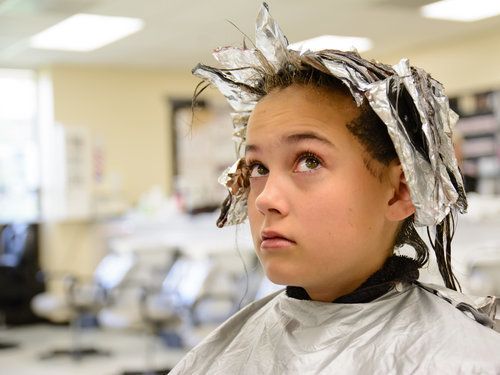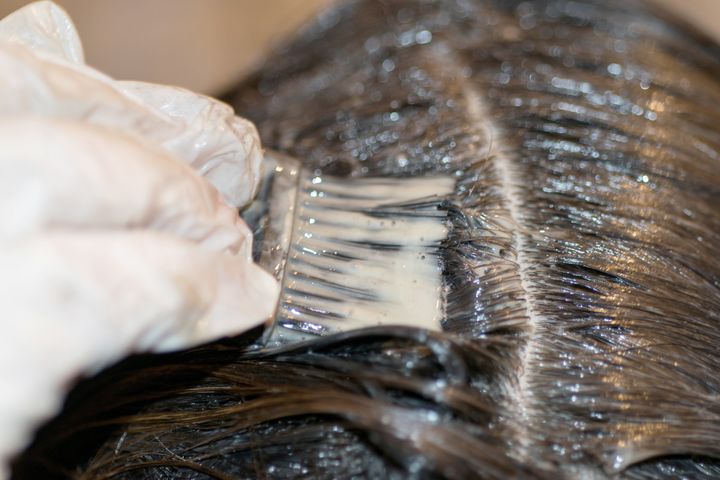Parents need to be aware of the potential risks of hair dye use before they let their children experiment with hair colour, a doctor has warned.
One of the most commonly used chemicals in hair-dye, Para-phenylenediamine (PPD), can cause skin reactions, worsen asthma and, on rare occasions, result in systemic illness (one that affects the entire body), according to Dr Rahul Chodhari, spokesperson for the Royal College of Paediatrics and Child Health (RCPCH).
“There is limited research on the long-term impact of using hair-dye, particularly in children, but children and adults are increasingly showing signs of reactions to PPD,” he told HuffPost UK.

So, if your child is desperate for a brand new hair colour, bear these things in mind before you tell them yes or no:
The Health Risks
Hair dyes containing PPD are safe to use on adults, providing safety instructions are followed. However until further research is conducted into the potential risks of PPD the extent of any risk to children is unclear.
What is known is that hair dye can cause severe allergic reactions.
“People can have a severe allergic reaction to some of the ingredients in hair colour in the same way that some people are allergic to certain foods,” explained Hilary Hall, chief executive of trade association the Natural Hair Federation.
“When salons ask a client to do an allergy test, even though it may be inconvenient, they are doing it to protect the safety and wellbeing of their clients.“
Dr Chodhari adds that darker shades of dyes pose a greater risk of an allergic reaction as these colours can contain higher concentrations of PPD.
Using Wash Out Dye Doesn’t Lessen The Risk
Even if your child uses a dye that washes out, that doesn’t minimise the health risk, unfortunately, as it may still contains the PPD chemical, which can cause allergic reactions.
There Are Safer Alternatives
Dr Chodhari recommends vegetable-based hair dyes, which are becoming increasingly available.
“But you must read the packaging carefully as some products marketed as ‘natural’ hair dye may still contain the PPD chemical,” he said.
“If in doubt, don’t use the product.”

Salons Should Not Dye Your Child’s Hair
According to the Natural Hair Federation’s code of practice, hairdressers should not apply any hair colour products to anyone under the age of 16.
However, the BBC has uncovered evidence that some hair salons are not following these guidelines.
During a BBC Wales X-Ray investigation, one in 17 salons offered colouring appointments to a 12-year-old.
“Salons have a duty to be aware of restrictions around the use of hair dye on children, and strictly enforce them,” said Dr Chodhari.

How To Treat A Child If They Have A Reaction To Hair Dye
Dr Chodhari advised: “If you think a child is experiencing a reaction to hair dye but it’s not an emergency, wash their hair and scalp thoroughly with mild shampoo to remove any excess dye.”
“You can also try gently applying an emollient such as aqueous cream to the affected skin. If problems continue, consult your GP.”
However, if you think your child is experiencing anaphylaxis, NHS Choices advises dialling 999 and giving them an adrenaline injection if you have one.
Signs of anaphylaxis include:
* Itchy skin or a raised, red skin rash.
* Swollen eyes, lips, hands and feet.
* Feeling lightheaded or faint.
* Swelling of the mouth, throat or tongue, which can cause breathing and swallowing difficulties.
* Wheezing.
* Tummy pain, nausea and vomiting.
* Collapsing and becoming unconscious.